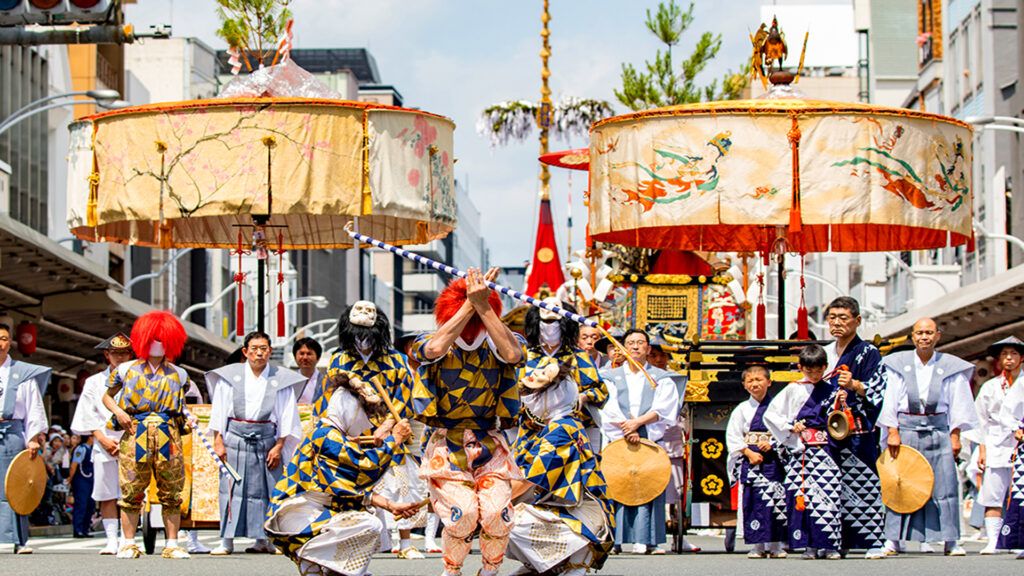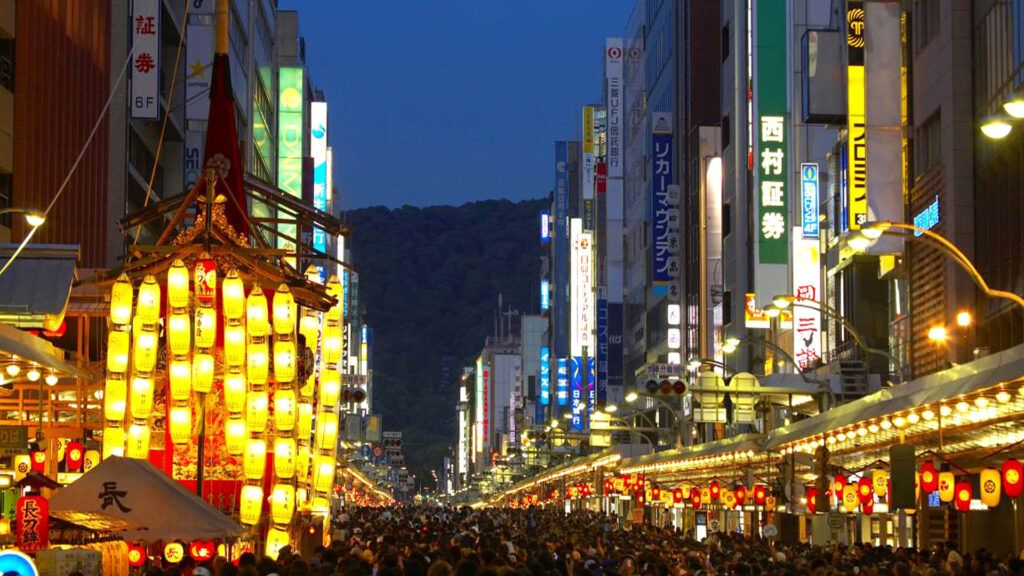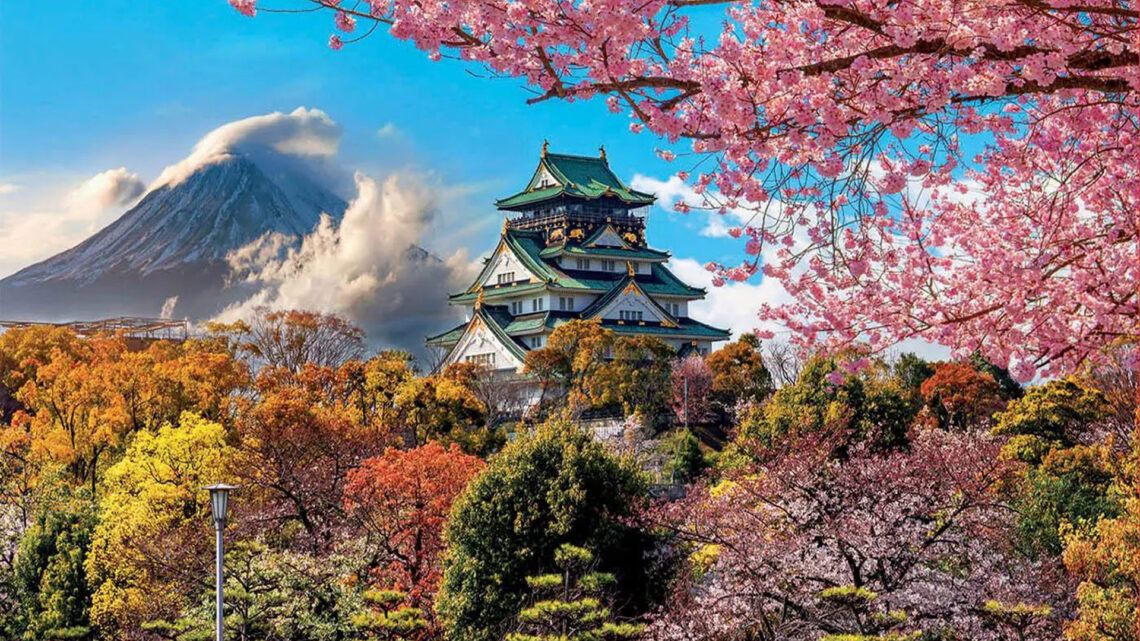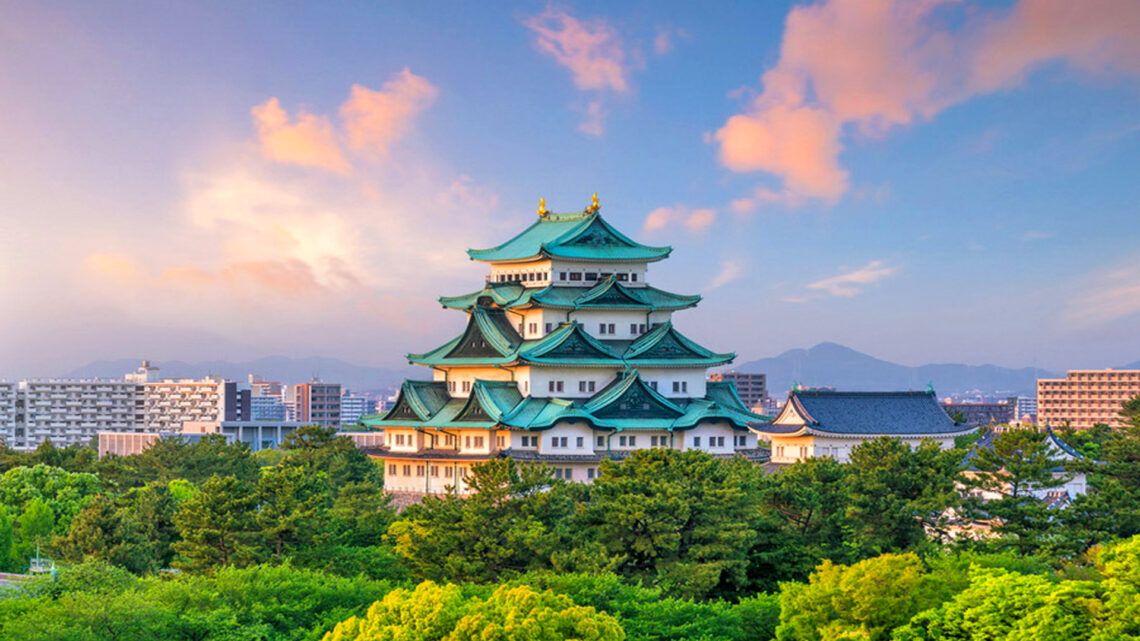
Kyoto, the former imperial capital of Japan, is renowned for its rich history and cultural traditions. One of the most fascinating and widely celebrated events in Kyoto is the Gion Matsuri. This festival, held in July, is not only a cultural highlight of the city but also attracts visitors from all over the world. In this comprehensive guide, I will describe the origins, significant events, and cultural significance of the Gion Matsuri in detail. Let us delve deep into the history and traditions of this unique festival.
Origin and History of the Gion Matsuri
The Gion Matsuri traces its roots back to 869 during the Heian period when Japan was ravaged by a severe plague. People believed that the plague was caused by evil spirits and thus performed a ritual to appease these spirits. Emperor Seiwa ordered the construction of 66 Hoko (large floats) for each district of ancient Japan. These were brought to the Yasaka Shrine, where prayers were offered to end the plague. This ritual marks the beginning of the Gion Matsuri, named after the Gion district where the Yasaka Shrine is located.
In 869, Japan was struck by a devastating plague. This epidemic, which claimed many lives, was perceived by the people of that time as the work of evil spirits and displeased deities. To appease these spirits and drive away the plague, Emperor Seiwa ordered a special ritual. The emperor commanded the construction of 66 Hoko (large floats), each representing one of Japan’s 66 ancient provinces. These floats were brought to the Yasaka Shrine, then known as the Gion Shrine, where priests performed prayers and rituals to beseech the gods for mercy.
This ritual was not only a religious ceremony but also a profound cultural act that brought the community together and strengthened the collective awareness for the protection and well-being of the city. It marks the beginning of what later became known as the Gion Matsuri.
For Whom the Festival Was Originally Intended
The Gion Matsuri was originally a ritual to appease the gods and spirits to protect the city of Kyoto and its inhabitants from diseases and other catastrophes. It was a community act, involving the entire city population to ensure the city’s well-being. The participants of the original festival were mainly priests, nobles, and residents of Kyoto who worked together to drive away the evil spirits and gain the favor of the gods.
At the center of this ritual stood the Yasaka Shrine, an important Shinto shrine in Kyoto dedicated to the kami Susanoo-no-Mikoto. Susanoo-no-Mikoto is the god of storms and seas but also the protective deity against diseases and plagues. By worshiping this god, people hoped to gain his favor and thus drive away the plague.
Over the centuries, the festival evolved, incorporating many elements of local culture and Shintoism. Today, the Gion Matsuri is a multifaceted cultural event celebrated throughout the entire month of July. It is known for its magnificent processions, traditional dances, and colorful floats.
Preparation and Organization

Preparations for the Gion Matsuri begin months in advance. Each of the 33 participating neighborhoods, which own Yama and Hoko, plays a crucial role in organizing and conducting the festival. These neighborhoods take pride in their participation and invest considerable time and effort in the preparations.
The magnificent floats displayed during the processions at Gion Matsuri are true works of art. There are two main types of floats: Yama and Hoko. Each of these floats is unique and is decorated with great care and attention to detail by the residents of the respective neighborhoods.
Hoko: These large floats can be up to 12 meters tall and weigh several tons. They are richly adorned with intricate carvings, tapestries, and fabrics. Constructing and decorating a Hoko requires the collaboration of many craftsmen and artists. Particularly impressive is the fact that these floats are built without nails – an ancient Japanese carpentry technique.
Yama: Unlike the massive Hoko, the Yama are somewhat smaller and lighter. They are also richly decorated, often with sacred figures and symbols representing the respective neighborhoods. The Yama are carried by people and are therefore more mobile than the Hoko.
Community involvement is a central aspect of the Gion Matsuri. Residents of each neighborhood actively contribute to the preparations, whether through financial support, manual labor, or participation in the events. This close-knit community effort strengthens social cohesion and promotes awareness of local culture and traditions.
Major Events of the Gion Matsuri

The Gion Matsuri consists of numerous events and rituals spread throughout the month of July. The highlights are the processions on July 17 and 24, known as Saki Matsuri (Pre-festival) and Ato Matsuri (Post-festival), respectively.
Yoiyama (The Evenings Before the Processions)
The days leading up to the main processions, known as Yoiyama, are filled with festive atmosphere and numerous activities. The streets of Kyoto are illuminated with lanterns, and the floats are displayed for public viewing. Visitors have the opportunity to admire the magnificent floats up close and marvel at the intricate details.
During the Yoiyama evenings, many neighborhoods open their doors to visitors, offering traditional food, drinks, and souvenirs. There are also numerous music and dance performances, adding to the lively atmosphere.
Saki Matsuri (July 17)
July 17 marks the climax of the Gion Matsuri with the Saki Matsuri procession. On this day, the splendid Hoko and Yama parade through the streets of Kyoto. The procession begins early in the morning and lasts all day. The floats are accompanied by musicians, dancers, and participants dressed in traditional costumes.
The route of the procession is carefully planned and runs through the main streets of the city center. Thousands of spectators line the streets to catch a glimpse of the impressive floats and enjoy the festive atmosphere.
Ato Matsuri (July 24)
One week after the Saki Matsuri procession, the Ato Matsuri takes place. This procession is smaller and more intimate but no less impressive. The floats displayed during the Ato Matsuri are often those not seen during the Saki Matsuri. This gives visitors the opportunity to admire even more of the beautifully crafted floats.
Religious Rituals and Ceremonies

In addition to the processions, religious rituals and ceremonies play a significant role in the Gion Matsuri. These rituals are deeply rooted in Shinto tradition and aim to honor the gods and seek protection and blessings for the city and its inhabitants.
Mikoshi Togyo
One of the most significant religious ceremonies of the Gion Matsuri is the Mikoshi Togyo. During this ceremony, portable shrines (Mikoshi) representing the deities of the Yasaka Shrine are carried through the city. This ceremony symbolizes the purification and protection of the city. The Mikoshi are richly decorated and are carried by bearers dressed in traditional costumes through the streets.
Hanagasa Junko
The Hanagasa Junko is another important ceremony held during the Gion Matsuri. In this procession, young women in traditional kimonos and flower-adorned hats (Hanagasa) carry small shrines and perform traditional dances. This ceremony is particularly known for its elegance and the beauty of the costumes and decorations.
The Gion Matsuri is deeply rooted in religious traditions and includes a variety of rituals performed before and during the festival. These rituals are essential components of the festival and reflect the profound connection between the community of Kyoto and their spiritual beliefs. Here are some of the most important religious rituals that define the Gion Matsuri:
Kippu-iri
The official beginning of the Gion Matsuri is marked by the Kippu-iri ritual. This ritual usually takes place on July 1st and signals the start of the festival preparations. Each of the 33 districts that possess Yama and Hoko conduct Kippu-iri in their own shrines and meeting halls. During this ceremony, prayers are offered, and offerings are made to invoke the protection and blessings of the gods for the upcoming festival. It is an important moment of reflection and preparation, underscoring the spiritual significance of the festival.
Mikoshi Togyo
A central ritual of the Gion Matsuri is the Mikoshi Togyo, which takes place on July 17th and July 24th. Mikoshi are portable shrines that represent the deities of the Yasaka Shrine. During the Mikoshi Togyo, these shrines are carried through the streets of Kyoto, accompanied by processions of priests, community members, and festival participants in traditional costumes. The carrying of the Mikoshi symbolizes the movement of the deities through the city to spread protection and blessings. This ritual is not only an act of worship but also a powerful communal experience that strengthens the residents’ connection to their spiritual roots.
Yoiyama
The evenings before the major processions on July 17th and July 24th are known as Yoiyama. During these nights, the festival floats, the Yama and Hoko, are displayed and festively illuminated in Kyoto’s districts. Residents open their doors and invite visitors to admire the splendid decorations and artworks. Yoiyama is a time of celebration but also of spiritual preparation. Many residents and visitors use this opportunity to pray at the shrines and acquire protective amulets. The festive atmosphere is enriched by traditional music and dances that celebrate the city’s spiritual and cultural heritage.
Shinko-sai
Another significant ritual is the Shinko-sai, which takes place on July 17th. This ritual marks the beginning of the Saki Matsuri procession and involves the transfer of three Mikoshi from the Yasaka Shrine to a temporary resting place called Otabisho. This resting place is located in the city center and serves as a temporary home for the deities during the festival. The Shinko-sai ritual is a symbolic act that ensures the presence of the deities in the city and their protection for the residents and visitors during the festival.
Nagoshi-sai
On July 31st, the last day of the Gion Matsuri, the Nagoshi-sai ritual takes place. This ritual marks the end of the festival and the return of the deities to the Yasaka Shrine. The Mikoshi are carried back in a solemn procession, accompanied by prayers and thanksgiving ceremonies. The Nagoshi-sai is a moment of closure and gratitude, during which the community thanks the gods for their protection and blessings during the festival.
Hanagasa Junko
Another beautiful and symbolic ritual is the Hanagasa Junko, which takes place on July 24th. During this ritual, young women in traditional kimonos and flower-adorned hats, called Hanagasa, parade through the streets and perform traditional dances. This procession is known for its elegance and beauty and symbolizes the harmony between humans and nature. The Hanagasa Junko is a tribute to the goddess Benzaiten, who is revered as the protector of the arts and wisdom.
Significance of the Gion Matsuri in Modern Times

Although the Gion Matsuri is deeply rooted in historical and religious traditions, it also holds great significance in modern times. It is a symbol of Kyoto’s cultural richness and historical continuity. The festival not only attracts tourists but also strengthens the local community and awareness of cultural identity.
Tourism and Economic Significance
The Gion Matsuri is a major economic factor for Kyoto. Every year, it attracts hundreds of thousands of visitors who stay in hotels, dine in restaurants, and buy souvenirs. This generates significant revenue for the city and the local economy.
Cultural Preservation
The festival plays an important role in preserving and passing on traditional crafts and cultural practices. The construction of the floats, traditional dances and music, and the ceremonies require specialized skills and knowledge that are passed down from generation to generation.
Tips for Visitors
- If you plan to visit the Gion Matsuri, here are some tips to help you make the most of your experience:
- Early Planning: Since the Gion Matsuri is very popular, it is advisable to plan your trip early and book accommodations in advance.
- Clothing: Wear comfortable clothing and shoes, as you will be walking a lot and standing for long periods. A hat and sunscreen are also recommended, as the summer sun in Kyoto can be very strong.
- Public Transport: Use public transport to get around the city. The streets are often closed or heavily crowded during the festival.
- Respect and Courtesy: Respect local customs and behaviors. Be polite to other visitors and locals.
Conclusion
The Gion Matsuri in Kyoto is more than just a festival – it is a living testament to Japan’s rich cultural traditions and historical depth. The splendid processions, the beautifully crafted floats, and the deeply rooted religious rituals make this event an unforgettable experience. Whether you are a history and culture enthusiast or simply want to enjoy the festive atmosphere, the Gion Matsuri has something for everyone. Plan your trip, immerse yourself in the history and tradition



